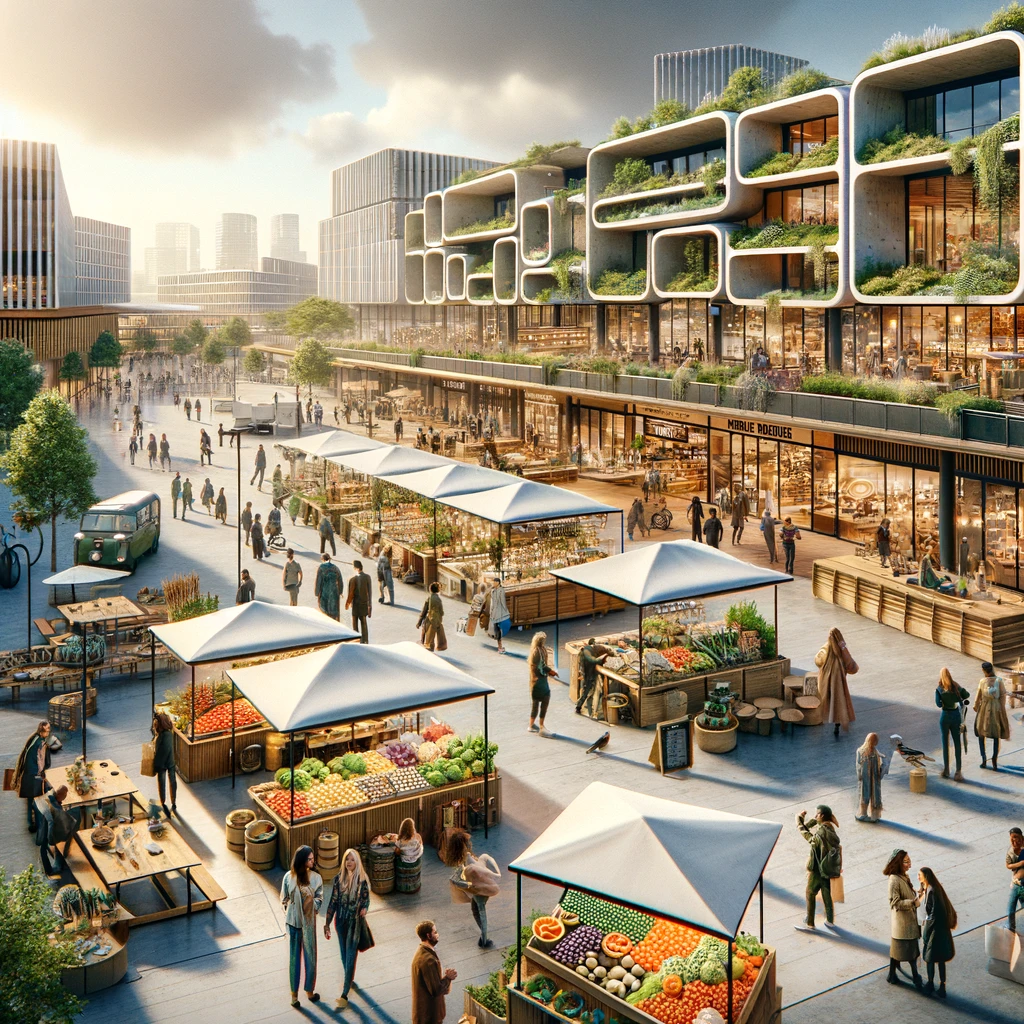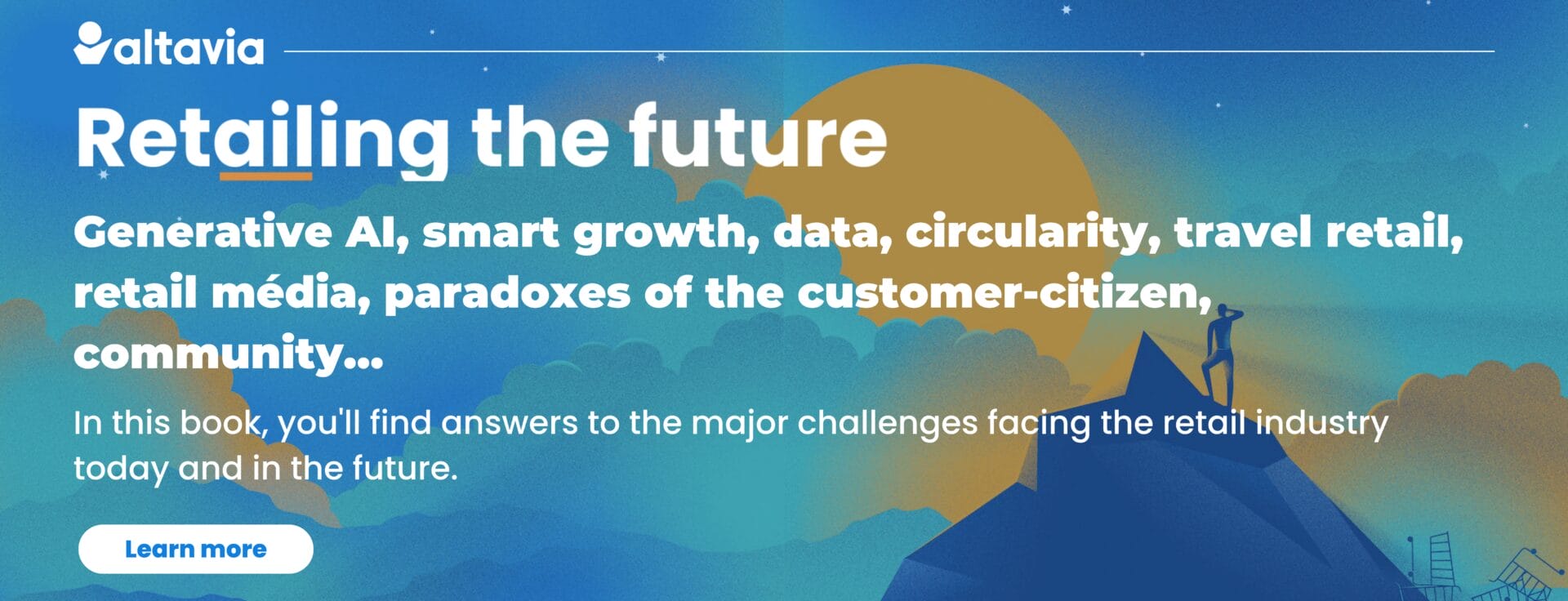From a commerce of accumulation to a commerce of harmony.

Photo credits : image created with Dall-E
In a time when the digital world seems to be overtaking personal connections, Nathan Stern of Altavia Pulse is taking a fresh look at the core principles of commerce, prioritizing human relationships and ethics. Bucking the trend of faceless, digital consumerism, he champions the idea of “living commerce” – a concept that elevates social values and human interactions above simple transactions.
In an age of increasingly digitalized commerce, what is your definition of “living commerce”?
It’s a dynamic form of commerce that transcends simple commercial transactions by offering human interaction. It’s also an emotional commerce, with extra soul, with an experience that has intrinsic value and isn’t there just to save money or time. It’s also a form of commerce with values, and a social, political and ethical vision. It seeks to create added value for society as a whole by combining economic profitability with social responsibility.
It is a holistic approach to commerce, as opposed to an ultra-specialized one that focuses only on buying and selling products.
The notion of commerce with values that you mentioned, is it new?
No, there have always been values in commerce. But they’re evolving. In the 60s, people promoted very strong values of democratization of access to goods with the first hypermarkets, which were seen as consumer paradise. Today, it’s a different story, with the emphasis on retail pluralism. We have the most transactional commerce we’ve ever had, but also the most relational, the most human.
What type of commerce works best?
The one that takes a stand: being the most ecologically virtuous, or the least expensive, or the one that shows the most attention to its customers, etc. By making a statement, retailers find their audience and can cultivate their difference by breaking away from the major trends affecting the market. The notion of mass consumption is outdated. Until the 2000s, members of the middle class had relatively homogeneous aspirations, and there was a kind of verticality in consumption. With the Internet and social media, everything has become fragmented: consumer desires no longer have anything in common with each other.
The more specific the retailer, the more it will be able to develop its community?
Yes, as a general rule. New York’s Park Slope Food Coop is a good example. It’s an in-house, participatory supermarket. Each member works a few hours a month to be allowed to browse the shelves. This creates a strong sense of belonging, and locally, each store supports the community of its customers. In a similar vein, The Coop in the UK also helps to bring local residents together through its community fridges. These are real social spaces where everyone can share surplus food, including surplus food from supermarkets, local food companies, producers, households, etc. In fact, a community emerges when there is added value for the customer to become attached to. It is never purely transactional.
Do retailers influence consumer behavior?
There’s no doubt about it. You could even say that our aspirations are partly produced by the retailer. They give us new habits. The development of commerce, for example, has challenged the shopping ritual, that moment of social synchronization. We can now shop 24 hours a day, 7 days a week on the Internet. To a certain extent, we’re all “Amazonized”? We’ve become accustomed to being delivered within 24 hours, and we no longer understand why we should wait longer for delivery. Similarly, whenever a technological innovation requires customer participation, the retailer helps the consumer get up to speed, as for self- scanning.
What is the impact?
We’re witnessing a widespread fragmentation of the purchasing process. We are concerned about the negative social externalities this entails, such as the deterioration in job quality, logistical inflation, and a growing continent of garbage and packaging.
Amazon has also initiated the “platformization” of commerce. What is your analysis?
Platforms are the new retailers: digital mediation between consumer and product replaces human mediation. The brand can distribute its products directly to the customer, and the customer themselves can become a merchant of services or second- hand goods. All these dynamics are made possible by economic factors, but also by the collapse in the cost of collecting and processing information. It is the abundance of information that has enabled this transformation. The simplest of orders mobilizes a large number of stakeholders, but the platform takes charge of all this complexity and makes it invisible.
What does this mean for society?
As everyone produces information, consumers can find themselves drowning in it, and some may be tempted to go for the simplest solution. For example, by buying the best-rated product, or the one recommended by the platform, or prescribed by a conversational agent, such as Alexa, or now with chatbot plugins like ChatGPT. In this context – where platforms are at the forefront of exchanges – the link disappears. Yet commerce has a real societal role to play. Who, apart from retailers, welcomes the entire population today? Even public services, which are becoming increasingly digitalized, no longer provide a universal, unconditional welcome to the public.
Retailers are the last universal hosts. It’s because there are still shopping streets that we keep our cities welcoming and hospitable. I hope that governments will understand the importance of preserving this ecosystem, and of modulating taxation according to the social benefits produced by certain forms of commerce.
Can we speak of a crisis in physical retail?
More generally, there’s a crisis of the physical in general. Medicine, work, dating, etc. Everything has gone digital. It’s therefore harder to justify the need to travel. We have to constantly reinvent experiences to motivate the public to renew physical contact. Retail is suffering from the loss of interest in the city, and from consumers’ laziness and lack of energy. And it’s a vicious circle because it’s that connection that gives energy. It’s the strength of the collective.
What is your vision for the future?
The months and years ahead are bound to be exciting. Commerce will continue to be augmented by technology, but with a more service-oriented focus, to the benefit of the customer. Tomorrow, consumers will be able to choose a retailer who no longer sees them as mere customers with purchasing power, but as members of a community who share a vision. In the future, we will increasingly see the development of businesses that are more passionate about service than products. Commerce will thus accompany the transformation of aspirations from a logic of accumulation (where we want to assert ourselves through possession and consumption) to a logic where we assert ourselves through balance, harmony, free time, fulfillment, respect for the planet, etc. It’s a different idea of success.

